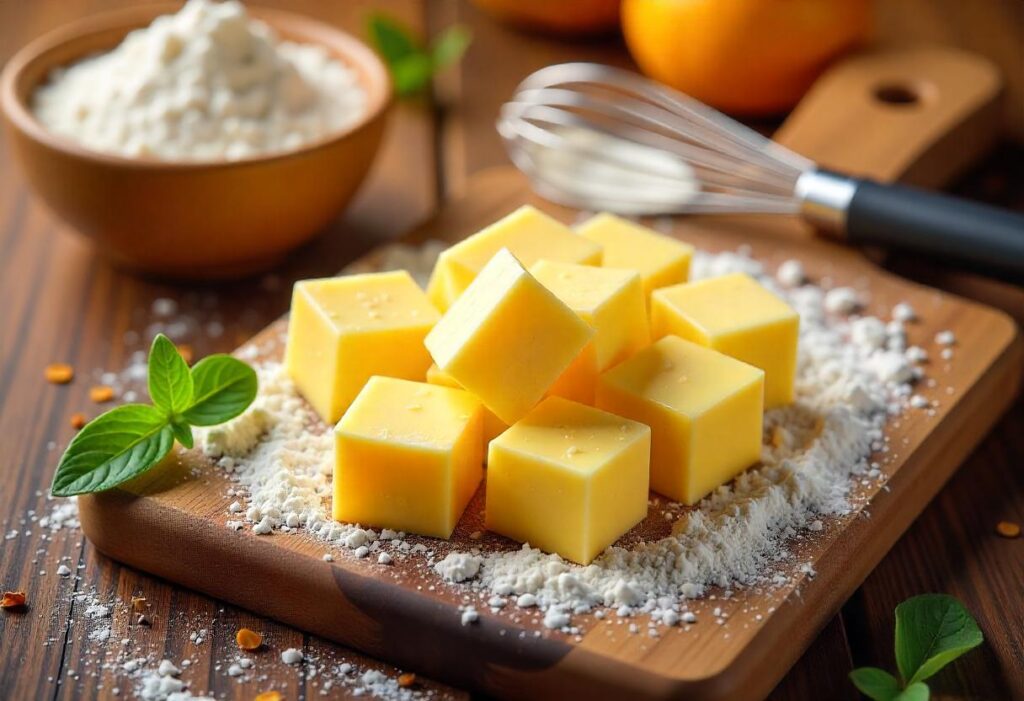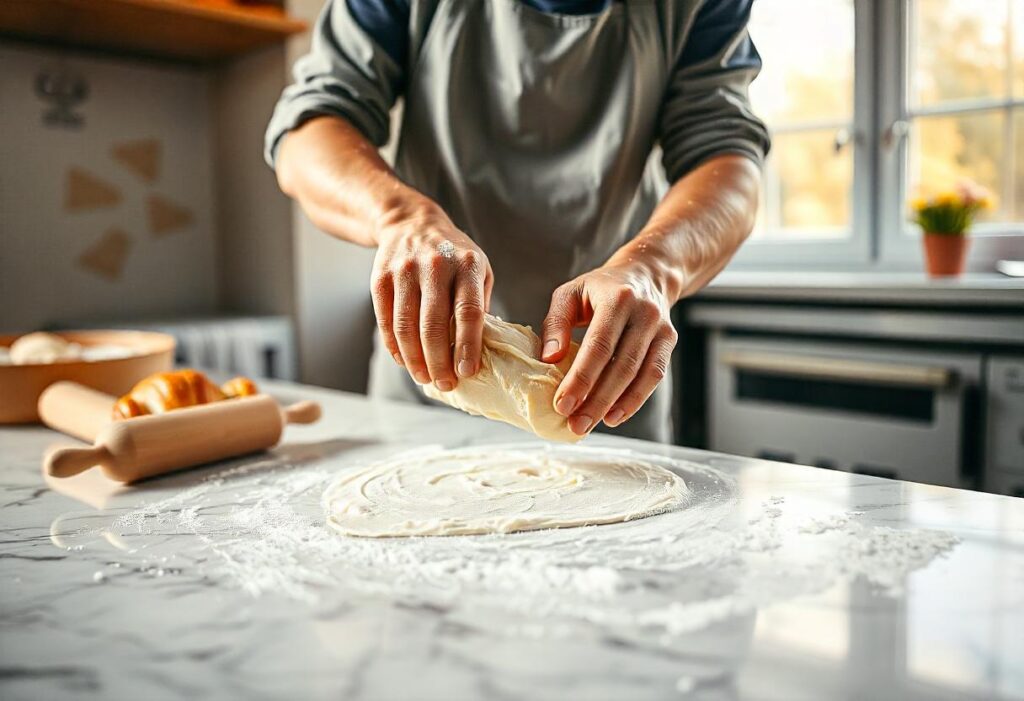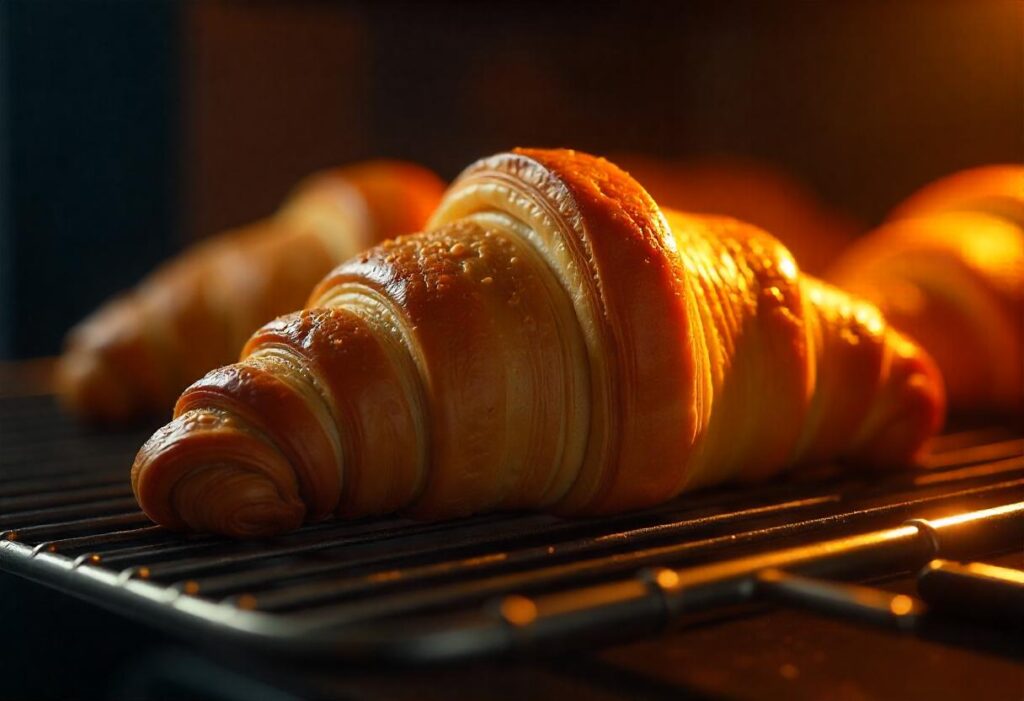Croissants are more than just a breakfast pastry—they’re an art form. Their golden, flaky layers, rich buttery aroma, and soft, airy centers make them a global favorite. But have you ever wondered what goes into making this delicious creation? Understanding the ingredients and their roles is the first step to mastering the art of croissant-making. In this guide, we’ll explore the key components of croissants, their preparation process, and even how to troubleshoot common issues. Let’s dive in!
Understanding the Basics of Croissants
Croissants aren’t your average pastry. They’re made with a type of dough called laminated dough, where layers of butter are folded into the dough multiple times. This technique gives croissants their distinct texture.
The History of Croissants: From Austria to France
Interestingly, the croissant didn’t originate in France. Its roots can be traced back to Austria, where a crescent-shaped pastry called the kipferl was popular. In the 19th century, the French adopted and refined the recipe, introducing butter and lamination techniques to create the croissant we know today.
« From Austrian beginnings to Parisian perfection, the croissant has traveled far to become a breakfast icon. »
Why Croissants Are a Staple in Baking Culture
Croissants symbolize the intersection of skill, patience, and indulgence. They’re more than just food—they’re a testament to the art of baking. Whether enjoyed plain, filled with chocolate, or paired with coffee, croissants elevate even the simplest moments.
Core Ingredients in a Croissant
At first glance, croissants require only a few basic ingredients. But each one plays a vital role in achieving the perfect pastry.
Flour: The Backbone of Croissant Dough
Flour is the foundation of any dough, and for croissants, high-protein bread flour is essential. It provides the gluten structure needed to hold those delicate layers together.
- Tip: Sift the flour to ensure a lump-free, smooth dough.
Butter: The Secret to Flaky Layers

Butter is the star of the show. European-style butter, with its high fat content, creates the thin, crispy layers that croissants are known for. Regular butter contains too much water, which can compromise the texture.
« Butter isn’t just an ingredient—it’s the magic behind every flaky bite. » 🥐
Yeast: Bringing the Dough to Life
Yeast gives croissants their light, airy texture. It’s responsible for the rise during proofing and adds a subtle, tangy flavor. Use fresh or active dry yeast for the best results.
Sugar and Salt: Balancing Flavor Profiles
Sugar adds sweetness and helps with browning, while salt balances the flavors and enhances the buttery richness. Together, they create the croissant’s signature taste.
Milk and Water: Hydration and Texture
A mix of milk and water hydrates the dough and affects its texture. Milk adds richness, while water keeps the dough elastic and light.
Optional Additions for Flavor and Variety
While the classic croissant is timeless, a few creative additions can take it to the next level.
H3: Chocolate Croissants: Adding a Sweet Filling
Pain au chocolat, or chocolate croissants, are made by placing a strip of chocolate inside the dough before rolling. The chocolate melts during baking, creating a gooey, irresistible filling.
Almond Croissants: A Nutty Twist
These croissants are filled with almond cream (frangipane) and topped with sliced almonds. They’re often made with day-old croissants, giving them a second life.
Savory Croissants: Cheese, Herbs, and Meats
For a savory spin, fill croissants with cheese, ham, or herbs before rolling. These are perfect for breakfast or a light lunch.
« Whether sweet or savory, croissants are a canvas for culinary creativity. »
Step-by-Step Guide to Croissant Dough Preparation
Making croissants from scratch is a labor of love. The key is precision and patience.
Measuring Ingredients Correctly
Accurate measurements are critical. Use a kitchen scale to weigh your ingredients, especially the flour and butter, to maintain consistency.
Mixing and Kneading the Dough
- Combine flour, sugar, salt, and yeast in a bowl.
- Gradually add milk and water, mixing until a rough dough forms.
- Knead on a floured surface for about 8 minutes, or until smooth and elastic.
Laminating the Dough for Perfect Layers

Lamination involves folding butter into the dough multiple times to create layers:
- Roll out the dough into a rectangle.
- Place a sheet of cold, pliable butter in the center and fold the dough over it like an envelope.
- Roll out and fold the dough again, chilling it between folds to keep the butter from melting.
« Lamination is where the magic happens—fold by fold, you’re building the layers that make croissants special. »
The Role of Ingredients in the Croissant-Making Process
Croissants may have a simple ingredient list, but each component serves a crucial purpose in achieving the perfect texture, flavor, and appearance. Understanding how these ingredients work together can help you master the art of croissant-making.
How Butter Creates Layers and Flakiness
Butter isn’t just added for flavor—it’s responsible for the croissant’s characteristic layers. During baking, the water in the butter turns to steam, puffing up the dough and separating it into thin, flaky sheets. This process, called lamination, makes croissants stand out from other pastries.
- Pro Tip: Always use cold, high-fat butter to ensure the layers don’t melt into the dough.
The Science of Yeast in Croissant Dough
Yeast does more than just make the dough rise. As it ferments, yeast releases carbon dioxide, which creates the small air pockets that make croissants light and airy. Additionally, fermentation adds a subtle tanginess that enhances the overall flavor.
« Think of yeast as the life force of the dough—without it, croissants wouldn’t have their signature fluffiness. »
Achieving the Right Dough Consistency
The dough’s consistency can make or break your croissants. It should be soft enough to roll out easily but firm enough to hold its shape during lamination. If the dough is too sticky, add a small amount of flour. If it’s too dry, add a teaspoon of water or milk.
Common Problems When Making Croissants
Even with the best ingredients, croissant-making can be challenging. Here are some common issues and how to fix them.
Why Croissants Turn Out Dense or Tough
Dense croissants usually result from underproofing or overworking the dough. Underproofing means the yeast hasn’t had enough time to create air pockets, while overworked dough becomes too elastic and resists rising.
- Solution: Allow the dough to proof until it’s visibly puffy, and handle it gently during rolling and folding.
How to Prevent Butter Leakage During Baking
If butter leaks out during baking, it can leave your croissants greasy and flat. This typically happens when the butter isn’t evenly distributed or if the dough gets too warm during lamination.
- Solution: Chill the dough between folds and ensure even rolling. Work quickly to prevent the butter from melting.
Fixing Croissants That Don’t Rise Properly
Flat croissants are often caused by inactive yeast or improper proofing.
- Solution: Check that your yeast is fresh and activated properly. Proof the croissants in a warm, draft-free area for consistent results.
Tips for Choosing High-Quality Ingredients
The quality of your ingredients can significantly impact the final product. Here’s what to look for:
What to Look for in Butter and Flour
- Butter: European-style butter with at least 82% fat content is ideal. It has less water, resulting in flakier layers.
- Flour: Use high-protein bread flour for the strength needed to hold the layers together.
The Importance of Fresh Yeast for Best Results
Fresh yeast or active dry yeast is essential for achieving the perfect rise. Old yeast may not activate properly, leading to dense croissants.
- Tip: Test your yeast by dissolving it in warm water with a pinch of sugar. If it bubbles within 5 minutes, it’s active.
Using Organic Ingredients for Superior Flavor
Organic milk, flour, and butter can enhance the flavor of your croissants. These ingredients often have a richer taste and fewer additives, which can make a noticeable difference in the final product.
How to Store and Reheat Croissants Properly
Croissants are best enjoyed fresh out of the oven, but proper storage and reheating techniques can help you maintain their deliciousness even after a day or two.
Storing Croissants to Maintain Freshness
- At Room Temperature: Place croissants in an airtight container or wrap them tightly in foil to keep them fresh for up to two days.
- In the Freezer: If you’re not planning to eat them immediately, croissants freeze exceptionally well. Place them in a freezer-safe bag and store for up to a month.
« Freezing croissants doesn’t just preserve them—it lets you enjoy a warm, flaky pastry anytime you crave one! »
Reheating Without Losing Flakiness

Reheating croissants correctly is key to bringing back their buttery, flaky texture:
- Oven Method: Preheat your oven to 300°F (150°C). Wrap the croissants in foil and heat for 10 minutes. Remove the foil for an additional 2-3 minutes for a crispy exterior.
- Air Fryer: Heat croissants at 300°F for about 5 minutes to achieve a quick, crispy finish.
Creative Uses for Leftover Croissants
Stale croissants can still be delicious with a little creativity:
- Croissant Bread Pudding: Tear croissants into pieces, soak them in a custard mixture, and bake for a rich dessert.
- Croissant French Toast: Dip croissants in egg batter and cook them on a griddle for a decadent breakfast.
- Savory Croutons: Cube croissants, season them with herbs, and bake until crispy for a unique salad topping.
Exploring Croissant Variations Around the World
Croissants have been embraced globally, inspiring countless regional variations that reflect local flavors and traditions.
French Classics: Pain au Chocolat and Almond Croissants
In France, two iconic croissant variations reign supreme:
- Pain au Chocolat: A rectangular croissant filled with rich, melted chocolate.
- Almond Croissants: Filled with almond cream and topped with sliced almonds and powdered sugar for an indulgent treat.
Unique Flavors from Asia: Matcha and Red Bean
Asian bakeries have embraced croissants, adding flavors like matcha (green tea powder) and red bean paste. These options add a uniquely earthy sweetness to the classic pastry.
American Twists: Croissant Sandwiches and Desserts
In the United States, croissants are often transformed into:
- Breakfast Sandwiches: Stuffed with eggs, bacon, and cheese for a hearty start to the day.
- Dessert Croissants: Glazed with sugar or filled with seasonal fruits like apples or berries.
« Croissants may have French origins, but their global variations prove that great food knows no borders. »
Conclusion: The Magic of Croissant Ingredients
Croissants are more than the sum of their parts. Flour, butter, yeast, sugar, and milk may seem simple, but together, they create something extraordinary.
Why Quality Ingredients Make All the Difference
Using the best ingredients ensures that every bite of your croissant is rich, flaky, and full of flavor. Croissant-making may take time and effort, but starting with high-quality components sets the foundation for success.
Encouragement to Experiment and Master the Art
Don’t be afraid to experiment. Try different fillings, play with savory options, or explore new flavor combinations. Remember, the journey of croissant-making is just as rewarding as the result.
« With each batch, your confidence will grow, and so will your love for the artistry of croissants. » 🥐
Final Thoughts
Croissants are a testament to the beauty of baking—a delicate balance of technique, quality ingredients, and patience. Whether you’re enjoying a classic plain croissant or a creative twist, each layer tells a story of craftsmanship. Take your time, embrace the process, and savor every bite of this iconic pastry.
« A great croissant isn’t just baked—it’s crafted with care and passion. »

